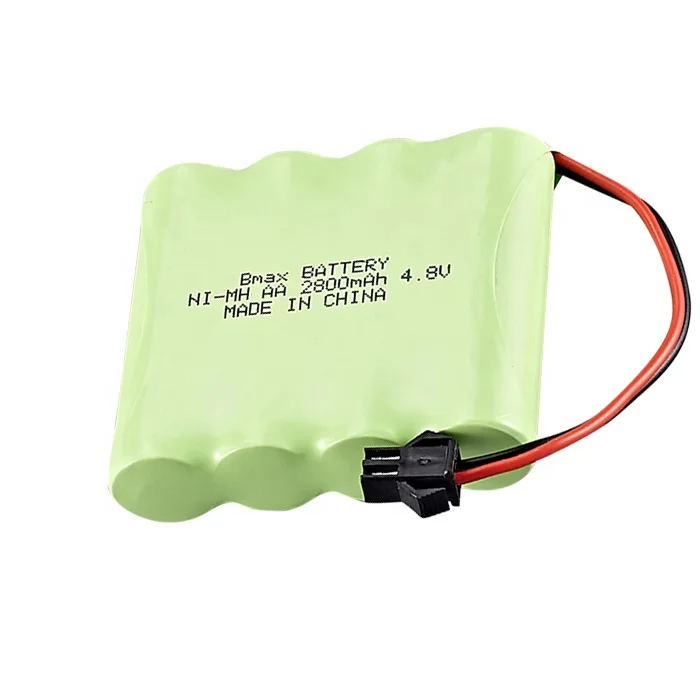Introduction:
Nickel-metal hydride (NiMH) batteries have become indispensable power sources in a wide range of applications, from consumer electronics to electric vehicles. To ensure optimal performance and longevity, it’s essential to understand the best practices for discharging NiMH batteries. In this comprehensive guide, we’ll explore the factors influencing discharge cycles, delve into the importance of discharge frequency, and provide practical recommendations for maximizing NiMH battery performance.
Understanding NiMH Battery Discharge:
Before diving into discharge frequency, let’s briefly review the basic principles of NiMH battery discharge. NiMH batteries generate electrical energy through a chemical reaction that occurs between the positive and negative electrodes and the electrolyte. During discharge, electrons flow from the negative electrode (anode) to the positive electrode (cathode), powering the connected device.
NiMH batteries are capable of delivering a consistent voltage and current output throughout most of their discharge cycle, making them suitable for a wide range of applications. However, the rate and depth of discharge can impact battery performance, capacity retention, and overall lifespan.
Factors Influencing Discharge Frequency:
Several factors influence the frequency at which NiMH batteries should be discharged, including:
- Usage Patterns: The frequency and depth of discharge cycles depend largely on how the batteries are used. Devices that draw power continuously or experience frequent high-drain usage may require more frequent discharging to prevent overdischarge and maintain performance. Conversely, devices with intermittent or low-drain usage may require less frequent discharging.
- Battery Chemistry: NiMH batteries have different characteristics compared to other rechargeable battery chemistries, such as nickel-cadmium (NiCd) or lithium-ion (Li-ion). While NiMH batteries are more resistant to memory effect than NiCd batteries, they can still benefit from periodic deep discharges to recalibrate their capacity and maintain performance.
- Self-Discharge Rate: NiMH batteries have a higher self-discharge rate compared to some other rechargeable battery chemistries. When left unused, NiMH batteries gradually lose their charge over time due to internal chemical reactions. Discharging NiMH batteries periodically helps offset self-discharge losses and ensures they remain ready for use when needed.
- Battery Management Systems: Some devices, particularly those powered by multiple NiMH batteries in series or parallel configurations, may incorporate battery management systems (BMS) to monitor and balance individual cell voltages during discharge. These systems help prevent overdischarge of individual cells, optimize battery performance, and extend overall lifespan.
Importance of Discharge Frequency:
The frequency of discharge cycles plays a crucial role in maintaining the health and performance of NiMH batteries. Here’s why discharge frequency is important:
- Capacity Maintenance: Periodic discharges help maintain the capacity of NiMH batteries by preventing capacity fade and ensuring all cells are utilized evenly. Discharging NiMH batteries to lower voltage thresholds periodically can help recalibrate their capacity and optimize performance.
- Prevention of Overdischarge: Overdischarge can lead to irreversible damage to NiMH batteries, causing capacity loss, reduced performance, and shortened lifespan. Discharging NiMH batteries regularly helps prevent overdischarge and ensures they remain within safe operating limits.
- Optimal Performance: NiMH batteries operate most efficiently within a certain voltage range. Regular discharges help keep NiMH batteries within this optimal voltage range, ensuring they deliver consistent performance and reliability over time.
Practical Recommendations for Discharge Frequency:
While there’s no one-size-fits-all answer to how often NiMH batteries should be discharged, here are some practical recommendations based on usage patterns and battery characteristics:
- High-Drain Applications: Devices that draw power continuously or experience frequent high-drain usage may benefit from more frequent discharging to prevent overdischarge and maintain performance. Consider discharging NiMH batteries once every 10-20 charge cycles or as needed based on usage patterns.
- Low-Drain Applications: Devices with intermittent or low-drain usage may require less frequent discharging. In such cases, consider discharging NiMH batteries once every 20-50 charge cycles or as needed to prevent overdischarge and maintain capacity.
- Periodic Deep Discharges: Periodic deep discharges can help recalibrate the capacity of NiMH batteries and maintain optimal performance. Consider performing a deep discharge (discharging to 0.9-1.0V per cell) once every 20-50 charge cycles or as recommended by the battery manufacturer.
- Avoiding Overdischarge: Monitor NiMH batteries closely during use and avoid overdischarge by removing them from devices once voltage drops to a safe threshold (typically 0.9-1.0V per cell). Avoid leaving NiMH batteries in devices for extended periods without use, as this can lead to overdischarge and irreversible damage.
Conclusion:
In conclusion, the frequency of discharge cycles plays a crucial role in maintaining the health and performance of NiMH batteries. By understanding the factors influencing discharge frequency, such as usage patterns, battery chemistry, self-discharge rate, and battery management systems, users can optimize their battery management practices and maximize the lifespan of NiMH batteries.
Whether powering consumer electronics, power tools, or renewable energy systems, NiMH batteries can provide reliable performance with proper care and maintenance. By following practical recommendations for discharge frequency, users can ensure their NiMH batteries deliver consistent performance, capacity retention, and longevity for a wide range of applications.


